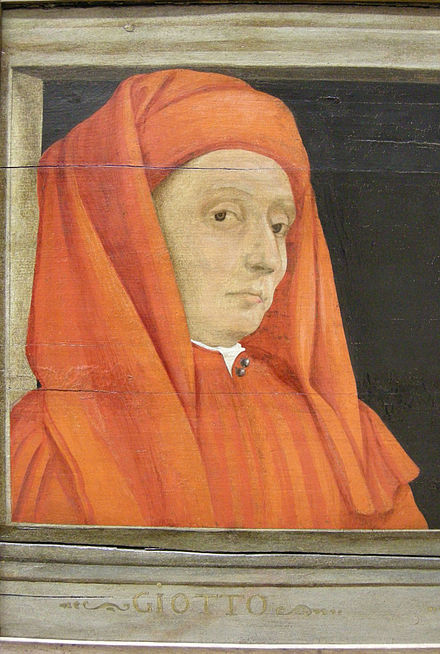Extraordinary artistic talent, Giotto of Bondone was born in Vicchio, in Mugello, maybe in 1267. The information regarding his first years are meagre and it is not historically proved that he has been a pupil of the great Cimabue. The first work attributed to him is from 1290: a Virgin for the church of Borgo San Lorenzo of which there is only a fragment remaining.

The following year, in 1306, the works in the lower Basilica of Assisi with the frescoes of the Scenes of the Infancy of Christ, the Franciscan Allegories and the Magdalene Chapel of which Giotto was the creator and architect, whereas his pupils did it materially. In 1311, he returned to Florence where he stayed for several years, leaving the town for short periods in order to work in Prato and in Rome. In 1318, in the Church of Santa Croce, he started to paint the four commissioned chapels: the Peruzzi Chapel and the Bardi Chapel reached us with their artistic jewels, and the other two, which disappeared. 1320, instead, was the year of the Stefaneschi Tryptic for Saint Peter’s basilica altar in Rome and the Baroncelli Tryptic in Santa Croce in Florence.
King Robert of Anjou called Giotto to Naples. In 1328, the Tuscan artist joined the city with his pupils to stay for a while. There were years of intense activity, as a first court painter highly esteemed by the sovereign, who considered and defined Giotto and defined him as his relative. Among all the works made in Naples, only a fragment of the Lamentation fresco (in Santa Chiara) and the figures of Illustrious Men in Castel Nuovo (painted on the windows of Saint Barbara’s chapel) reached us. The neapolitan transfer was determining for the success of some of Giottos’s pupils, but also for the formation of a real local artists school, among which Giovanni Barile’s master whose “hand” has been identified on the paintings of the crypt in the cathedral of the Aragonese Castle in Ischia. Roberto D’Oderisio and Pietro Orimina.
After Naples, he painted in Bologna a Polyptych for the Church of Santa Maria degli Angeli. Then, he went back to Florence but this time as an architect, responsible for the public works, which on 18th of July 1334 launched the construction of the famous campanile of the Dome which bears his name. After a permanency in Milan, which deeply marked the Lombard painting, the great master dedicated to Florence his last energies, with the frescoes of Palazzo del Bargello, famous for the oldest portrait of Dante. He died shortly after, on the 8th of January 1337.




Comments powered by CComment